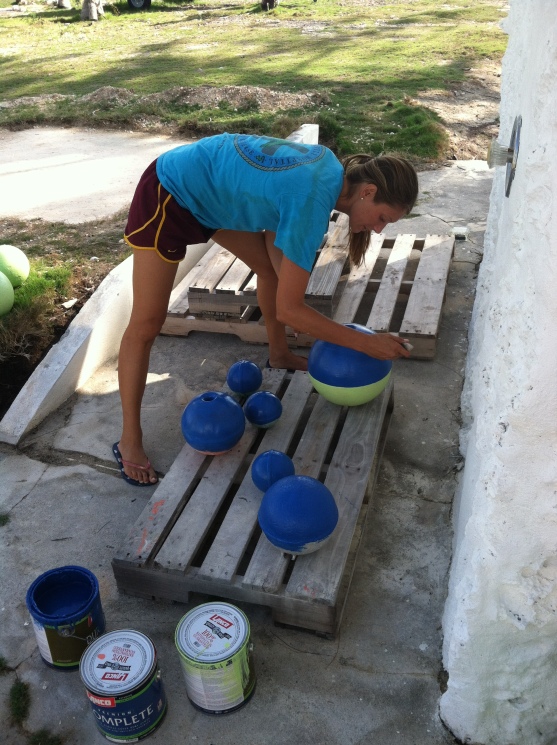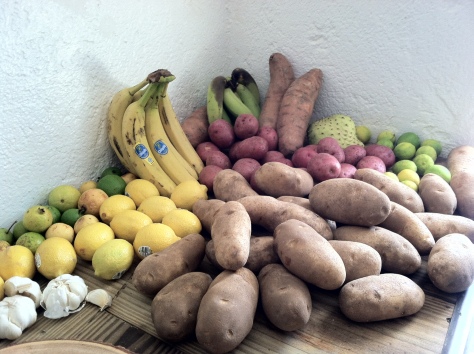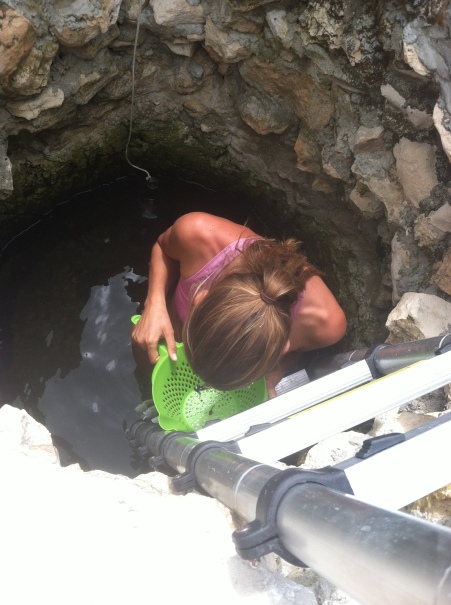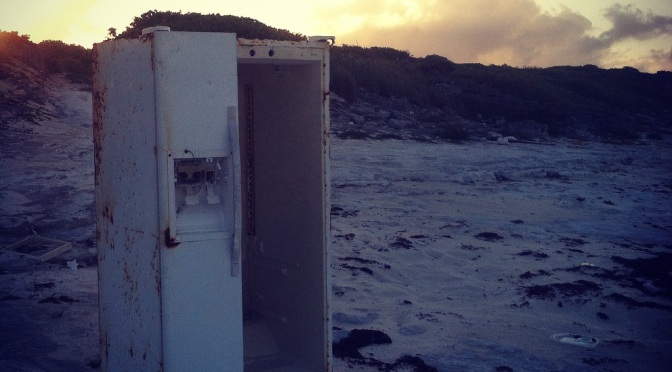When people hear that I lived in the Bahamas for a year, their idea of the life I led there is drastically different from the reality. True, the island chain’s turquoise blue water, white sand beaches, and towering cliffscapes are not exaggerated on postcards and brochures. It really is an island paradise, and I really did have those at my fingertips.
But my days were not spent sprawled in a lounge chair catching a tan, sipping fruity drinks, and staring out at a blue expanse of nothingness. I caught a tan while scrubbing salt water and lemon juice into dirty laundry, while painting shutters in a bikini in stifling 100 degree heat–with no A/C to escape to. I drank warm water that I’d siphoned into bottles from a freshwater jug. And more often than not, my view of the ocean was interrupted by “the bush”–an impassable tangle of green and brown roots and leaves that traversed the remote island I called home.
About half the time I lived in the Bahamas, I did not have electricity. For all but the first month, I did not have running water. Part of this was due to setting up camp in the shell of an abandoned property while slowly–ever so slowly–renovating the house. Part of this was due to the ensuing aftermath of Hurricane Joaquin.
Every morning, I woke at 6 AM and cooked oatmeal over a portable stovetop. I poured salt water over my toothbrush to wet it before brushing my teeth. Then, I put on a mismatching bathing suit top and bottom before heading outside to the well on property. No freshwater source existed on the narrow island, so the well tapping into the water table only produced easy access to salt water. I tied a rope around glass bottles I’d plucked from the shoreline, long ago washed up from the tide. Dangling the bottle down into the 10 foot well, I hauled up five bottles of water, a gallon each, to suffice for the day: one for dishes, two for the toilets, one for laundry, and one for showering.
Next, I plugged up the kitchen sink and filled it with one of the bottles’ contents. All of the dishes from the day would soak in here throughout the day. Before bed, I would scrub them then set them out to dry, streaks of salt residue the next day affirming their cleanliness.

By now, it was nearing 8 AM. I would decide my projects for the day. This varied every day. Some days I scavenged and hauled 20-pound rocks from the surrounding bush and aligned them on the property, the humble beginnings of a garden bed forming atop the hard coral rock surface beneath my feet. Other days I drove 40 minutes into town on the one road, potholed, no-lined highway to get groceries: $7 for a head of moldy cauliflower that took a week to get from the U.S. to Nassau to Long Island, Bahamas; $10 for a pack of 5 tampons. On Saturdays, though, I went to the Farmer’s Market for local produce and socializing with the women selling me fresh mangos, guava, breadfruit, and arugula.
When it wasn’t laundry day, I set to work painting the entire exterior of the two small buildings on the property–once a command center for the adjacent unkept runway, then a nightclub, then a home. Eventually, I would paint the inside.
Some days I climbed down into the well to scoop out the Cuban tree frog tadpoles and drop them in the water’s edge at the end of the runway. I’d return to scrape the muck out of the old well, a futile attempt to purify thecontaminated salt water.

By noon, I had made a lunch of potatoes–Greek lemon or mustard potatoes–or lentils. Then I headed back outside for more laborious tasks. The heat of the day peeked at 3 PM, an unbearable time to be outside, skin baking and burning even in rare, coveted shady spots on the land. Indoors, I wrote for hours, taking breaks to read a book, play cards, or glue seashells together to make shell creatureswhich I would eventually bequeath to my Bahamian friends as I said my farewells a year later.
At 5 PM, I’d explore a new nook of the island, turning down unmarked after unmarked dirt road to find yet another vacant beach on this 80-mile long island of 3,000 inhabitants. I collected sea glass and sea shells, dead coral and bones. I encountered dozens of adult sea turtles while snorkeling in a cove; came face-to-face with a bull shark in open water.
At 8 PM I made dinner. Before the sun fell below the horizon at 8:30 PM, I was asleep–awaken throughout the night by the loud incessant croaking of Cuban tree frogs that had long ago matured from the well.
In the wake of Hurricane Joaquin, I would understand what it meant to be white and privileged showcased by my ability to choose to live this way, and the choice to return to “normal.’















